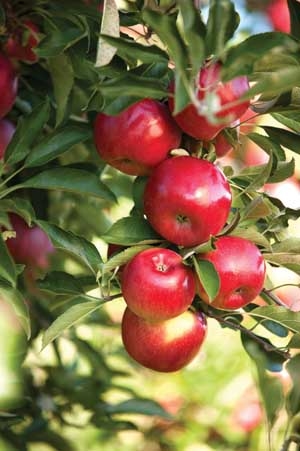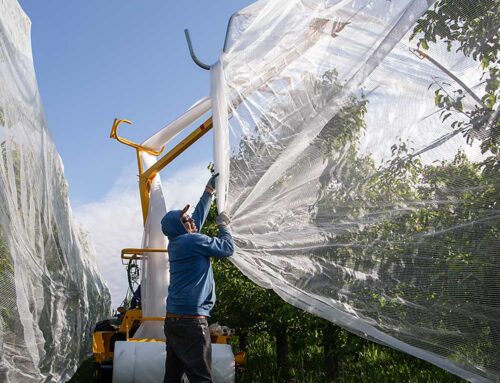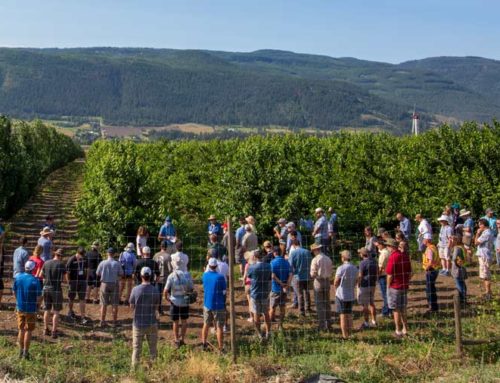
RubyFrost—a cross between Braeburn and Autumn Crisp—is one of the first managed varieties developed by Cornell University. Courtesy Robin Leous, Crunch Time Apple Growers
The New York Apple Growers Association, which is commercializing new apple varieties released by Cornell University’s breeding program, has changed its name to Crunch Time Apple Growers.
Manager Robin Leous said the group’s original name was too similar to the New York Apple Association and New York Apple Sales.
“There was a lot of confusion among those in the industry about who we are and what we do,” Leous said. “There was even confusion among our members.”
The name Crunch Time was selected because the crunchiness will be a key attribute of all varieties that the association manages, she said. About 145 of New York’s apple growers have joined the association in order to be able to grow the new apple varieties, which are only available to growers in New York.
Cornell has developed more than 60 apple varieties in the past century, but SnapDragon (cultivar NY1) and RubyFrost (NY2) are its first managed varieties. SnapDragon (a cross of Honeycrisp and an advanced New York selection) is a red apple with sweet, crisp, and juicy flesh. It matures in late September to early October in New York. RubyFrost (a cross of Braeburn and Autumn Crisp) has a more tart flavor and high vitamin C content and is suitable for both fresh eating and baking. It matures in mid- to late October.
Leous said increasing volumes of the two apples are coming to market. The first trees were planted in 2011. Plantings will be limited to 1,000 acres, and the last trees will go in the ground next year. The plantings won’t be in full production until 2022.
About 60 percent of the acreage will be SnapDragon, but RubyFrost is a more prolific apple, so production of the two varieties will be about the same. So far, East Coast retailers are handling most of the production. Leous said marketing efforts will expand geographically as greater volumes become available.





Leave A Comment